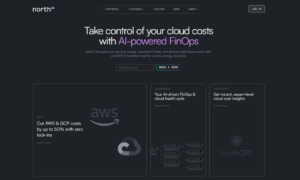Research indicates that data centers are currently contributing GVA of £4.51 billion, creating 41,700 jobs and £623 million in UK economy. At current growth projections, data center sector will contribute additional GVA of £45.2 billion till 2035, additional job creation of 42,000 and £9.9 billion in additional tax revenue generated by industry till 2035.
However, this rapid expansion brings environmental considerations to the forefront. Data center sector in UK is projected to consume between three and half to five times of current power consumption by 2035.
Data Centers are mission critical facilities those are expected to have availability over 99.995% time of a year. The high availability and resilience for data center operations is guaranteed by installation of onsite power generation, typically diesel generators. Large Data Center campuses install dozens of larger diesel generators that consume diesel fuel.
It is estimated that United Kingdom has over 350 large and small data centers with an approximate total power capacity of 1,100 MW. This capacity is expected to be tripled by 2035.
With such a massive power demand, running diesel generators to power the data center contributes significantly CO2 emissions to the environment. On average a diesel generator consumes 250 litres of diesel fuel per MW per hour. For current data center capacity this equates to 6.6 million litres of diesel fuel per year, just for testing of onsite diesel generators two hours per month at full load. According to UK Government Greenhouse reporting: conversion factors 2022, it is equivalent to 17,820 metric tonnes of CO2 emissions. This is a massive environmental challenge that can hinder the growth of data center sector.
Carbon dioxide (CO₂) emissions are one of the primary drivers of global warming. When fossil fuels like diesel are burned for power generation, transportation, or backup systems in data centers, they release CO₂ into the atmosphere. This gas traps heat by absorbing infrared radiation that would otherwise escape into space, creating a “greenhouse effect.” As CO₂ levels rise, more heat is retained, disrupting climate systems and leading to rising global temperatures. The result is a cascade of environmental impacts: melting ice caps, rising sea levels, extreme weather events, and shifts in ecosystems. The data center industry, through its reliance on diesel generators and grid electricity, contributes to this challenge unless it aggressively transitions to cleaner energy sources and more efficient operations.
Diesel generators have a direct and indirect environmental footprint. These are categorized using the Greenhouse Gas (GHG) Protocol’s three “scopes”:
- Scope 1 Emissions: These are direct emissions from sources the data center owns or controls. When a facility runs diesel generators on-site, the combustion of diesel fuel releases CO₂, NOₓ, and particulate matter directly into the atmosphere. These emissions fall squarely under Scope 1 and are fully attributable to the operator. They are a critical metric in measuring the carbon intensity of a facility’s operations.
- Scope 2 Emissions: These are indirect emissions from purchased electricity, heat, or cooling. If diesel generators are used less and the facility relies more on grid power, especially if the grid is fossil fuel based, then emissions from generating that electricity count under Scope 2. In the UK, although grid decarbonization is improving, any reliance on non-renewable grid electricity still adds to a data center’s carbon footprint under this category.
- Scope 3 Emissions: These are indirect emissions not produced by the facility directly, but that occur across its value chain. For diesel generators, Scope 3 includes upstream emissions from fuel production, refining, and transport, as well as manufacturing and servicing of the generators themselves. These often go underreported, but they form a significant share of a data center’s life-cycle emissions profile.
Energy and Environmental Design (EED) frameworks, such as LEED, BREEAM, or internal corporate ESG protocols, increasingly account for total emissions impact, not just energy use.
The use of diesel generators affects EED in the following ways:
- Negative impact on carbon scoring: Frequent or prolonged generator use increases Scope 1 emissions, which directly worsens sustainability ratings.
- Transparency requirements: Leading EED models now push for full Scope 1–3 disclosure, meaning diesel-related emissions throughout the fuel supply chain must be measured and reported.
- Pressure to transition: To maintain high EED ratings, data centers are increasingly expected to reduce generator reliance.
IONOS, Europe’s largest hosting services provider, and Fasthosts, its UK subsidiary was planning build its new state-of-the-art data center in the UK. With £21 million investment, IONOS was planning to build 43,708 sq ft facility comprises a cutting-edge 30,729 sq ft Tier IV data centre and 12,978 sq ft of ancillary offices in first phase. IONOS faced a critical challenge: aligning its commitment to Environmental, Social, and Governance (ESG) goals and strict Energy and Environmental Design (EED) standards with the uncompromising need for high availability. Traditionally, diesel generators serve as the backbone of data center resilience, ensuring uptime during grid failures. However, their high Scope 1 emissions and environmental impact stood in direct conflict with IONOS’s sustainability objectives. The company needed to rethink its approach to onsite power generation, reducing diesel dependency without sacrificing the Tier IV level reliability expected by its customers. This delicate balance between environmental responsibility and operational resilience defined the core engineering and strategic challenge for the new build.
To solve this challenge, I performed a comprehensive evaluation of backup power strategies that could replace, or supplement traditional diesel generators and it can be reliably integrated into data center critical infrastructure The solution required not only technical feasibility, but long-term operational viability, regulatory alignment, and carbon accountability across all emission scopes. The evaluation resulted in following findings.
| Options | Pros | Cons | Conclusion |
| Renewable Energy (Solar/Wind) with Grid Tie
|
Zero emissions at point of generation
Enhances ESG profile and aligns with net-zero goals Reduced dependency on carbon-intensive grid power |
Intermittent supply — not viable as a sole source for emergency backup
Large space footprint for solar arrays; limited scalability in urban UK sites Grid-tied systems still require conventional backup for Tier IV uptime guarantees |
Suitable for offsetting regular power use, but insufficient alone to meet availability requirements of Tier IV facilities. |
| On-site Battery Energy Storage Systems (BESS) | Instantaneous response time; seamless failover
Zero emissions during operation Can be paired with renewables for hybrid systems Reduces reliance on fossil-fuel-based backup |
Limited runtime (typically minutes to low hours depending on sizing)
High Capex; lifecycle replacement cost every 7 to 10 years Still requires secondary backup (diesel or HVO) for extended outages |
Viable as a bridge solution for short-duration outages, but not standalone for long-duration resilience. |
| HVO (Hydrotreated Vegetable Oil) Fuelled Generators | Up to 90% reduction in net CO₂ emissions compared to diesel
Lower NOₓ and particulate emissions, helping meet local air quality requirements Supply chain for HVO is growing rapidly in the UK and EU |
Slightly higher operating cost per litre compared to diesel
Availability of certified, traceable HVO must be guaranteed Market pricing still volatile, though trending toward stability |
The most practical and scalable solution offering the environmental benefits closer to renewables with the resilience of diesel. However, never incorporated in a Tier IV facilities with strict uptime and compliance standards. |
After a detailed evaluation of technical feasibility, environmental performance, and total cost of ownership (TCO), HVO-fuelled generators were selected as an onsite power solution for IONOS UK data center. Since, this was first time to deploy any such solution in a Tier IV data center, detailed design analysis was performed to identify challenges with HVO-fuelled generators. These challenges were overcome by developing new design techniques and engineering solutions.
This decision balanced the need for Tier IV high availability with ESG and EED commitments, without compromising operational resilience.
Hydrotreated Vegetable Oil (HVO) is a next-generation, renewable diesel alternative produced from sustainable feedstocks such as used cooking oils, animal fats, and other waste-based lipids. Unlike traditional biodiesel, HVO undergoes a hydrogenation process that results in a cleaner, more stable fuel with properties nearly identical to mineral diesel but without the environmental baggage. Its key advantage is its compatibility with diesel engines, allowing organizations to transition to a lower-carbon fuel source without costly infrastructure changes.
The environmental benefits of HVO are significant. It delivers up to 90% reduction in net CO₂ emissions over its lifecycle, along with substantial cuts in nitrogen oxides (NOₓ) and particulate matter. Because it burns cleaner and more efficiently, HVO also contributes to lower local air pollution, a growing concern in urban and high-density data center zones. From a supply chain perspective, HVO is increasingly available across Europe and the UK, with many suppliers offering certified, traceable fuel that meets strict sustainability criteria.
For the data center industry, HVO offers the rare combination of high resilience and low environmental impact. It enables operators to maintain required uptime while advancing ESG goals, complying with Scope 1 emission reduction strategies, and avoiding regulatory penalties tied to diesel use.
On October 19, 2022, IONOS announced opening of its Tier IV data center facility in Worcester Six Business Park. This is globally first ever Tier IV certified data center with HVO generators.
This advancement in environmentally friendly data center infrastructure, specifically the adoption of HVO-based onsite power generation, represents more than just a sustainability upgrade. It sets a scalable, real-world precedent for how mission critical facilities can reduce their carbon footprint without compromising uptime or reliability. By demonstrating that Tier IV resilience can be achieved with low-emission fuels, this approach provides a replicable model for other operators across the UK and internationally. As regulatory pressure intensifies and customers demand greener operations, the ability to combine operational excellence with measurable ESG impact gives forward-looking AI and Cloud data centers a competitive edge. If adopted at scale, this model could significantly reduce the environmental impact of digital infrastructure globally, while accelerating the industry’s shift toward net-zero targets.
The graph illustrates the environmental impact of adopting HVO fuel in the UK data center sector. As of now, the UK’s total data center capacity stands at approximately 1,100 MW and is projected to grow at a compound annual growth rate (CAGR) of 9.72%, reaching around 3,700 MW by 2035. The orange line represents the projected CO₂ emissions from diesel generators as capacity expands, amounting to an estimated 60,000 metric tonnes of CO₂. In contrast, the green line shows the emissions trajectory if HVO generators are used instead. Despite supporting the same growth in capacity, HVO would limit emissions to just 6,000 metric tonnes. This stark contrast highlights HVO’s potential to meet the sector’s rising energy demands while dramatically reducing its carbon footprint.
In conclusion, the UK data center industry stands at a pivotal point, where the pursuit of performance must align with environmental responsibility. By adopting HVO-based generators, IONOS has demonstrated that it’s possible to uphold Tier IV reliability standards while drastically reducing carbon emissions and aligning with ESG and EED goals. This approach not only addresses immediate sustainability challenges but also sets a replicable model for the global data center community. As capacity demand accelerates, solutions like HVO offer a practical path forward: scalable, low-carbon, and operationally sound. The future of digital infrastructure depends on decisions made today and cleaner, smarter backup power is a crucial step in that direction.
About Author
Muhammad Naveed Saeed
As a Vice President – Engineering at Uptime Institute, I am deeply involved in development of new technologies to support of digital technology and data center sector from past 20 years. With experience of designing and building 100’s of data centers, I am excited to share my insights and experience with broader industry and regulators.



































